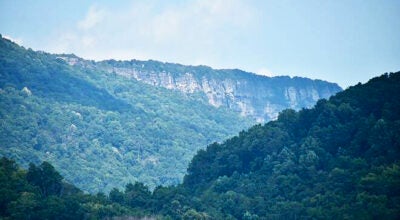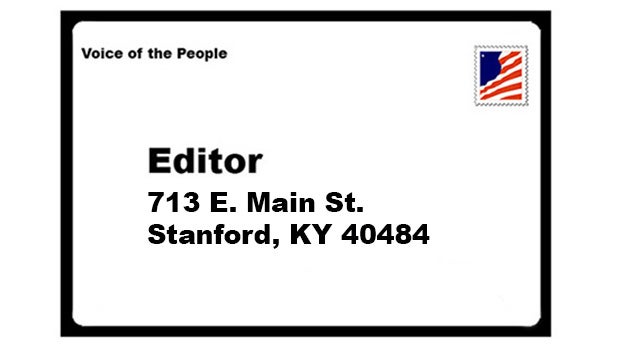Distillery disasters made headlines, history
Published 10:42 am Friday, July 20, 2018
By STUART W. SANDERS
Guest columnist
A bourbon storage facility in Bardstown owned by the Barton 1792 Distillery collapsed recently, sending thousands of barrels of aging whiskey rolling down a hillside.
Throughout Kentucky history, distillery disasters have made headlines. Few, however, were as descriptive as a November 1886 distillery fire at the John Thixton Distilling Company in Owensboro. In that incident, onlookers sampled the distillery’s product while the buildings — and the bourbon — burned.
During the 19th and 20th centuries, there were dozens of fires at distilleries across the state. Thanks to the equipment used in the distillation process, wooden barrels and expansive buildings filled with flammable product, the risk of fire was ever-present.
The Thixton distillery, which opened in 1881, was owned by John Thixton and J. W. Slaughter. It was located “just above the city on the river bank.” When the fire erupted, there were 2,143 barrels of whiskey onsite that included 96,000 gallons produced between 1884 and 1886.
Residents reported the blaze when they saw flames lick out of both sides of the distillery. Although the local fire department rushed in to help, a lack of fire hydrants and no road leading to the Ohio River to allow for an alternate source of water doomed the structure. The blaze also imperiled other buildings. The “bonded warehouse, thirty yards away” soon caught fire.
As the flames spread, workers tried to save the stored bourbon. They rolled nearly 300 barrels out of the warehouse, but 1,843 barrels ultimately burned.
Residents gathered to watch the blaze. “A fire of such magnitude is extraordinarily a grand sight at night,” a local reporter exclaimed, “but the burning whiskey was a feature that gave the conflagration a peculiar interest to the large crowd that assembled.”
Barrels burst and the whiskey caught fire. As it poured out of the building, a newspaper wrote, “Soon in the adjoining field there was a large lake of burning whiskey making a beautiful blue flame.”
Not letting the opportunity go to waste, some of the onlookers gathered up the ignited product and began drinking.
“A number of men and boys provided themselves with buckets and would approach the lake of fire cautiously and scoop up the liquor and then hasten away from the heat,” the paper reported.
Some of the flaming alcohol made it to the river, where “it floated down the Ohio still burning.”
It was a night that witnesses would not soon forget. “The fire continued for over an hour and before 8 o’clock there were many men too drunk to walk home.”
When determining the cause of the fire, authorities immediately suspected foul play.
A week earlier, the distillery at the nearby Welch Distilling Company had also burned. Therefore, locals were suspicious that a “fire-bug” had set the blaze. A month later, another fire broke out at the Welch warehouse, destroying more than 1,800 barrels. This convinced the public that an arsonist was in their midst, but no culprits were ever apprehended.
Owensboro apparently fell victim to distillery fires with some regularity.
In April 1893, the Glenmore Distilleries Company lost 19,000 barrels when four warehouses burned. After that incident, newspapers reported that “the hydrant water in Owensboro tasted strong of whiskey. The distillery being located on the river bank above the water works and twenty thousand barrels … being emptied into the river, this was not unnatural.”
In August 1918, Owensboro’s Green River Distillery burned and 43,000 barrels were lost. Twenty years later, the Glenmore Distilleries Company suffered another fire, which led to the loss of multiple buildings and 32,000 barrels of whiskey.
Temperance leaders were quick to capitalize on the news of distillery fires, using these accidents to warn citizens about the dangers of alcohol. One list of temperance maxims printed in the Maysville Public Ledger said that “Distillery fires are the devil’s lanterns” and “Distillery fires light the way to the penitentiary, the gallows and perdition.”
While fires were a persistent danger to distilleries during the 19th and early 20th centuries, similar losses have taken place more recently.
In November 1996, Heaven Hill Distilleries in Bardstown suffered a crippling fire that burned the company’s distilling building and seven warehouses. Millions of gallons of burning bourbon flowed down hillsides in flaming streams, prompting one local fireman to say, “Welcome to hell.”
Four years later, a fire at a Wild Turkey Distillery warehouse near Lawrenceburg consumed nearly 17,000 barrels. One local official compared the 5-foot wide “stream of burning whiskey” that flowed that day to lava.
Although distillery fires are less frequent today than they were more than a century ago, the bourbon industry is not — as the collapse of the Barton 1792 storage facility attests — immune to accidents and disasters.
Because of the influence that the bourbon industry has upon Kentucky’s economy, these incidents will always make headlines. This is especially true when streams of burning whiskey roll downhill like lava.
The flames may no longer be considered the “devil’s lantern,” but they certainly capture the public’s attention. Even if you don’t drink the flaming bourbon.
Stuart W. Sanders is the Kentucky Historical Society’s history advocate.





